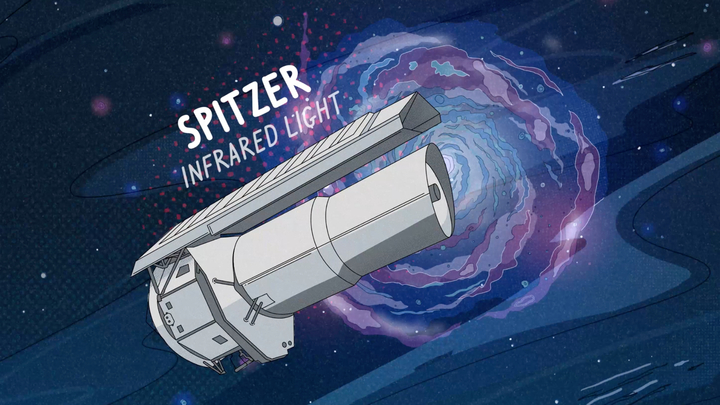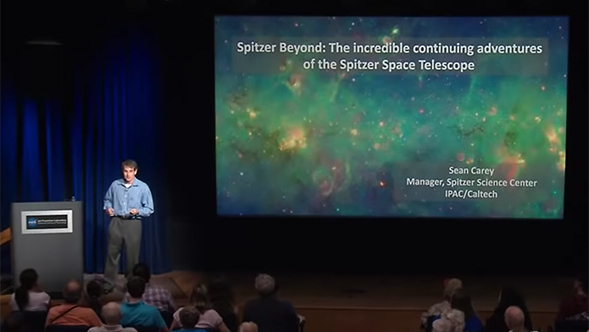How do scientists turn data from NASA’s Spitzer Space Telescope into the incredible images we see? It's not as simple as just snapping a picture of the universe.
NASA's Spitzer Space Telescope’s mission concluded on Jan. 30, 2020, at the agency's Jet Propulsion Laboratory in Pasadena, California.
This is the animated storybook tale of the Spitzer spacecraft and its exploits as part of the space telescope superteam known as NASA’s Great Observatories, which also includes Hubble. With its special power to see infrared light, Spitzer revealed a whole side of the universe that had been hidden from our view.
The Spitzer Space Telescope has been observing the universe in infrared light for over 16 years. As the mission comes to a close, we’ll take a look at some of the amazing highlights and the lasting legacy of this incredible observatory.
After 16 years of amazing infrared discoveries throughout the cosmos, NASA’s Spitzer Space Telescope mission is coming to an end
What is infrared light and how do we use it to study the universe? Infrared radiation, or infrared light, is a type of energy that we humans can't see but can feel as heat.
After 16 years of unveiling the infrared universe, NASA's Spitzer Space Telescope has left a singular legacy.
Soar through this cosmic landscape filled with bright nebulas, as well as runaway, massive and young stars.
Initially scheduled for a 2.5-year primary mission, NASA's Spitzer Space Telescope has gone far beyond its expected lifetime -- and is still going strong after 15 years.
The Spitzer Space Telescope is one of NASA’s Great Observatories, designed to observe the universe in infrared light. Launched in 2003 with an expected lifetime of five years, Spitzer has succeeded beyond our wildest expectations. This talk will cover engineering feats and technical challenges, as well as recent science highlights. These include science Spitzer was not designed to do, such as the discovery and characterization of seven rocky, potentially habitable planets in the nearby TRAPPIST-1 system.
JPL Spitzer Space Telescope astronomer explains a colorful animation of two planets colliding and spewing lava and vaporized rock.
Get ready to gaze at galaxies through your telescope. Then compare your views to those taken in infrared by the Spitzer Space Telescope.
NASA's Spitzer Space Telescope has uncovered clues about the atmospheres of two planets beyond our solar system. The new finding is a stepping stone to eventually studying signs of life on other worlds. It represents a significant step toward being able to detect possible life on rocky planets beyond our solar system.
Ever wonder how astronomers get those amazing pictures from space telescopes? A how-to from the space visualization artist for NASA's Spitzer Space Telescope.

















